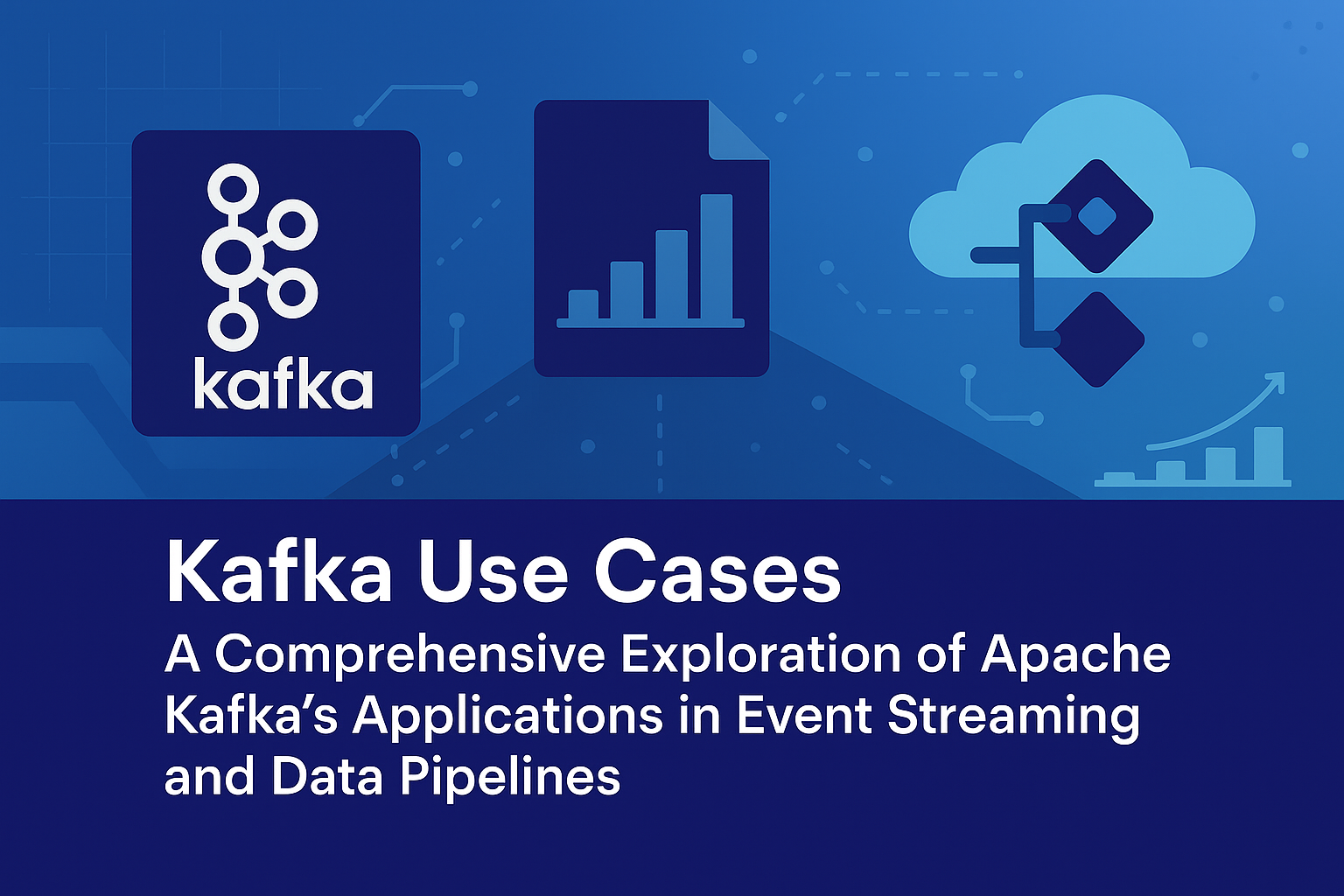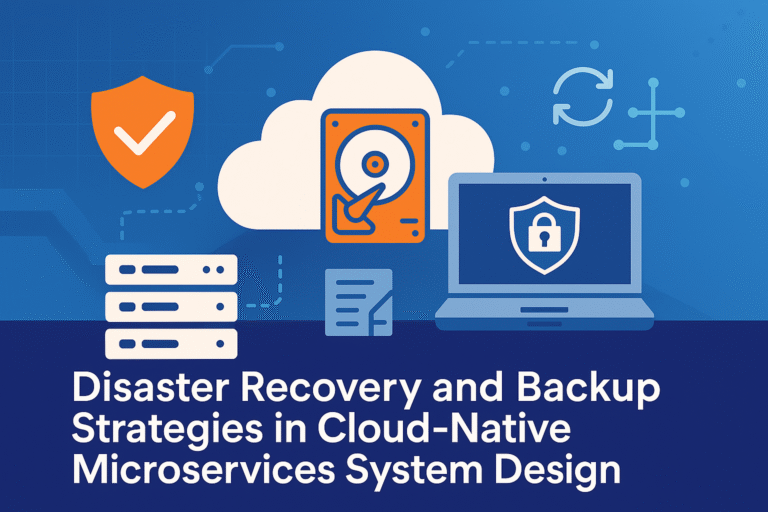Introduction
Apache Kafka serves as a foundational tool in distributed systems for managing high-volume data flows with efficiency and reliability. Its architecture, centered on durable logs, partitioned topics, and scalable brokers, enables it to support two primary paradigms: event streaming, where continuous data events are processed in real time, and data pipelines, where data is ingested, transformed, and routed between disparate systems. Event streaming focuses on handling unbounded sequences of events (e.g., user interactions or sensor readings) to enable immediate insights or actions, while data pipelines emphasize structured data movement, often integrating with databases or analytics platforms. This analysis examines these use cases in detail, highlighting mechanisms, performance considerations, advantages, limitations, and strategic implications. It incorporates prior concepts such as the CAP Theorem (prioritizing availability and partition tolerance with eventual consistency), consistent hashing (for partition assignment), idempotency (for reliable message processing), heartbeats (for broker liveness), failure handling (e.g., replication), checksums (for data integrity), Change Data Capture (CDC) (for database integration), load balancing (for consumer groups), quorum consensus (in KRaft for metadata), multi-region deployments (for global scalability), and capacity planning (for resource estimation). The discussion provides a structured framework for system design professionals, emphasizing how Kafka’s features align with real-time requirements while addressing trade-offs in scalability, consistency, and cost.
Kafka in Event Streaming
Context and Mechanism
Event streaming involves the continuous ingestion, processing, and output of data events in real time, such as clicks, logs, or metrics, to support applications requiring immediate responsiveness. Kafka’s log-based design treats events as immutable appends to partitioned topics, enabling producers to publish at high rates while consumers process them asynchronously. Partitions allow parallel consumption, and replication ensures durability across brokers.
The mechanism unfolds as follows:
- Production: Producers publish events to topics, optionally keyed for ordered partitioning (e.g., using consistent hashing to route user-specific events to the same partition).
- Storage and Replication: Events are appended to logs with offsets, replicated across brokers (e.g., factor of 3) for fault tolerance, and retained for a configurable period (e.g., 7 days).
- Consumption: Consumers in groups pull events from partitions, committing offsets to track progress. KRaft ensures metadata consistency for group coordination.
- Processing: Kafka Streams applies transformations (e.g., aggregation over 1-minute windows), supporting exactly-once semantics via transactions to avoid duplicates.
- Failure Handling: Heartbeats (1s interval) detect consumer failures, triggering rebalancing; idempotency ensures safe retries without duplication.
Performance is optimized through checksums (e.g., CRC32) for integrity, rate limiting (e.g., Token Bucket to cap producer bursts), and multi-region replication for global access (with 50–100ms lag).
Performance Metrics
- Throughput: Up to 1M events/s in a 10-broker cluster with 50 partitions.
- Latency: < 10ms end-to-end for local processing, 50–100ms in multi-region setups.
- Availability: 99.999% with 3 replicas and < 5s failover via KRaft.
- Lag: < 100ms consumer lag under normal load.
- Storage: 1TB/day for 1B events at 1KB each, with capacity planning estimating 7TB for 7-day retention.
Advantages
- Real-Time Responsiveness: Enables immediate event processing (e.g., < 10ms latency for anomaly detection).
- Durability and Replayability: Logs allow event replay for auditing or recovery (e.g., reprocess 7 days of data).
- Scalability: Horizontal addition of brokers/partitions supports linear growth (e.g., double throughput with double brokers).
- Fault Tolerance: Replication and KRaft ensure no data loss during failures (e.g., tolerate 1 broker failure in a 3-replica setup).
Limitations
- Eventual Consistency: Replication lag (10–100ms) may cause temporary inconsistencies, requiring idempotency for safe handling.
- Complexity: Managing partitions, consumer groups, and KRaft adds 10–15% operational overhead.
- Cost: High-volume streams incur storage costs (e.g., $0.05/GB/month for replication).
- Overhead: Transactions for exactly-once add 10–20% latency.
Real-World Examples
- Fraud Detection in Banking: A bank processes 500,000 transactions/day. Producers publish transaction events to a “transactions” topic with 20 partitions. Kafka Streams aggregates patterns (e.g., unusual amounts over 5-minute windows), using transactions for exactly-once semantics and idempotency to avoid duplicate alerts. KRaft manages coordination, heartbeats detect failures, and quorum consensus ensures metadata consistency. Performance: < 10ms latency, 500,000 events/s, 99.999% uptime, with GeoHashing for location-based fraud checks.
- IoT Sensor Monitoring in Manufacturing: A factory streams 1M sensor readings/s from machines. Producers publish to a “sensor_data” topic with 50 partitions, replicated 3x. Consumers use Kafka Streams for real-time anomaly detection (e.g., temperature spikes), integrating CDC from equipment databases. Rate limiting caps bursts, consistent hashing balances load, and multi-region replication ensures global access. Performance: < 10ms latency, 1M events/s, 99.999% uptime.
Strategic Considerations
- Prioritize for High-Volume Streams: Use for applications needing real-time insights (e.g., banking fraud), with eventual consistency for availability.
- Trade-Offs: Balance throughput (more partitions) with latency (fewer partitions); use multi-region for global apps but account for lag.
- Monitoring: Track lag (< 100ms) and throughput with Prometheus for proactive scaling.
- Security: Encrypt with TLS 1.3, use checksums (SHA-256) for integrity.
Kafka in Data Pipelines
Context and Mechanism
Data pipelines involve the structured flow of data from sources (e.g., databases, logs) to sinks (e.g., analytics platforms), often requiring transformation and integration. Kafka acts as a central conduit, using connectors for ingestion and delivery, with partitioning for parallel processing.
The mechanism includes:
- Ingestion: Source connectors (e.g., JDBC for PostgreSQL) pull data into topics, capturing changes via CDC (e.g., Debezium).
- Transformation: Kafka Streams applies operations (e.g., enrich with external data), ensuring idempotency for safe processing.
- Delivery: Sink connectors push data to sinks (e.g., Elasticsearch for search), with rate limiting to prevent overload.
- Coordination: KRaft and quorum consensus manage metadata, heartbeats ensure broker liveness.
- Fault Tolerance: Replication (factor 3) and DLQs handle failures, with checksums (CRC32) for integrity.
Performance Metrics
- Throughput: 100,000 events/s per pipeline, scaling to 1M/s with multiple connectors.
- Latency: < 100ms end-to-end, 50–100ms in multi-region.
- Reliability: > 99.99% delivery with transactions.
- Storage: 500GB/day for 500M events at 1KB each.
- Scalability: Add workers for linear scaling (e.g., 5 workers × 20,000 events/s = 100,000 events/s).
Advantages
- Seamless Integration: Connectors reduce custom code (e.g., 80% less development for database syncing).
- High Throughput: Handles large-scale pipelines (e.g., 1M events/s).
- Reliability: Exactly-once semantics prevent duplicates.
- Flexibility: Supports schema evolution with Schema Registry.
Limitations
- Latency Overhead: Transformation adds 10–50ms (e.g., Streams processing).
- Complexity: Connector management adds 10–15% overhead.
- Cost: Replication and storage increase expenses ($0.05/GB/month).
- Eventual Consistency: Lag (10–100ms) risks stale data in sinks.
Real-World Examples
- Retail Customer Analytics: A retail chain ingests CRM data from Salesforce (source connector) into a “customer_events” topic with 10 partitions. Kafka Streams enriches with purchase history, and a sink connector pushes to BigQuery for reporting. KRaft manages coordination, heartbeats detect failures, and quorum consensus ensures metadata consistency. Performance: < 100ms latency, 100,000 events/s, 99.999% uptime.
- Logistics Supply Chain Integration: A logistics firm uses source connectors to pull warehouse data from Oracle into a “inventory_updates” topic. Streams processes updates (e.g., stock alerts), and sink connectors deliver to a forecasting system. Rate limiting caps ingestion, GeoHashing handles location data, and multi-region replication ensures global access. Performance: < 100ms latency, 500,000 events/s, 99.999% uptime.
Strategic Considerations
- Prioritize for Integration-Heavy Systems: Use for ETL pipelines where decoupling is key (e.g., retail CRM to analytics).
- Trade-Offs: Balance throughput (more connectors) with latency (fewer transformations); use multi-region for global but account for costs.
- Monitoring: Track consumer lag and throughput with Prometheus for proactive adjustments.
- Security: Encrypt with TLS 1.3, use checksums (SHA-256) for integrity.
Integration with Prior Concepts
- CAP Theorem: Kafka favors AP with eventual consistency for high availability, integrating strong consistency for transactions.
- Consistency Models: Eventual consistency for most operations (10–100ms lag), strong for transactions.
- Consistent Hashing: Distributes messages across partitions.
- Idempotency: Ensures safe retries with unique IDs.
- Heartbeats: Monitors broker liveness.
- Failure Handling: Retries and dead-letter queues manage failures.
- SPOFs: Replication eliminates single points of failure.
- Checksums: SHA-256 ensures message integrity.
- GeoHashing: Optimizes partitioning for location-based data.
- Load Balancing: Least Connections distributes consumer workload.
- Rate Limiting: Token Bucket caps message rates.
- CDC: Propagates database changes to topics.
- Multi-Region: Cross-region replication ensures global availability.
- Capacity Planning: Estimates storage (1TB/day), compute (10 brokers for 1M messages/s), and network (1 Gbps for 1M messages).
Advanced Implementation Considerations
- Deployment: Deploy Kafka on Kubernetes with 10 brokers, 3 replicas, and SSDs for low-latency disk I/O.
- Configuration:
- Topics: 100–1,000 per cluster, 10–50 partitions per topic.
- Replication Factor: 3 for durability.
- Retention: 7 days for replayability.
- Performance Optimization:
- Use SSDs for < 1ms disk latency.
- Enable GZIP compression to reduce network usage by 50–70%.
- Cache consumer offsets in Redis for < 0.5ms access.
- Monitoring:
- Track throughput (1M messages/s), latency (< 10ms), and lag (< 100ms) with Prometheus/Grafana.
- Monitor disk usage (> 80% triggers alerts) via CloudWatch.
- Security:
- Encrypt messages with TLS 1.3.
- Use IAM/RBAC for access control.
- Verify integrity with SHA-256 checksums (< 1ms overhead).
- Testing:
- Stress-test with JMeter for 1M messages/s.
- Validate failover (< 5s) with Chaos Monkey.
- Test split-brain scenarios with network partitions.
Discussing in System Design Interviews
- Clarify Requirements:
- Ask: “What’s the throughput (1M messages/s)? Latency target (< 10ms)? Retention period (7 days)? Global or regional?”
- Example: Confirm 1M events/s for IoT system with high latency.
- Propose Queue System:
- Kafka: “Use for Uber’s high-throughput streaming with partitioning.”
- RabbitMQ: “Use for Amazon’s task queues with at-least-once delivery.”
- Redis Streams: “Use for Twitter’s low-latency notifications.”
- SQS: “Use for serverless AWS workflows.”
- Example: “For Netflix, implement Kafka with CDC for analytics.”
- Address Trade-Offs:
- Explain: “Kafka scales but risks out-of-order delivery; Redis Streams offers low latency but limited durability.”
- Example: “Use Kafka for Uber’s scalability needs.”
- Optimize and Monitor:
- Propose: “Use consistent hashing for partitioning, monitor lag with Prometheus.”
- Example: “Track IoT system latency and throughput for optimization.”
- Handle Edge Cases:
- Discuss: “Mitigate consumer lag with more partitions, handle failures with retries and DLQs.”
- Example: “For healthcare, use dead-letter queues for failed vitals processing.”
- Iterate Based on Feedback:
- Adapt: “If latency is critical, use Redis Streams; if throughput is key, use Kafka.”
- Example: “For trading platform, add brokers for higher throughput.”
Conclusion
Kafka’s distributed architecture, with brokers, replication, leaders, controllers, and KRaft, enables it to handle high-throughput (1M messages/s), low-latency (< 10ms), and fault-tolerant (99.999% uptime) workloads. Components like Kafka Streams, Connect, and Schema Registry extend its capabilities for stream processing and data integration. Integration with concepts like consistent hashing, idempotency, CDC, and quorum consensus ensures robust operation. Real-world examples, such as telemetry, streaming, and healthcare systems, demonstrate its versatility. Strategic trade-offs—balancing latency, consistency, and scalability—guide its implementation, making Kafka a cornerstone of modern distributed systems for real-time data processing.




